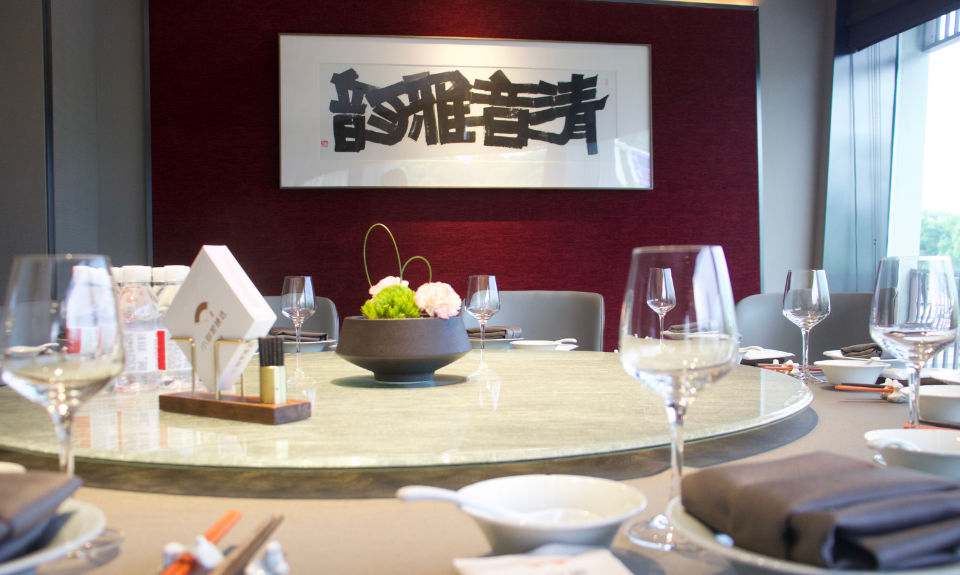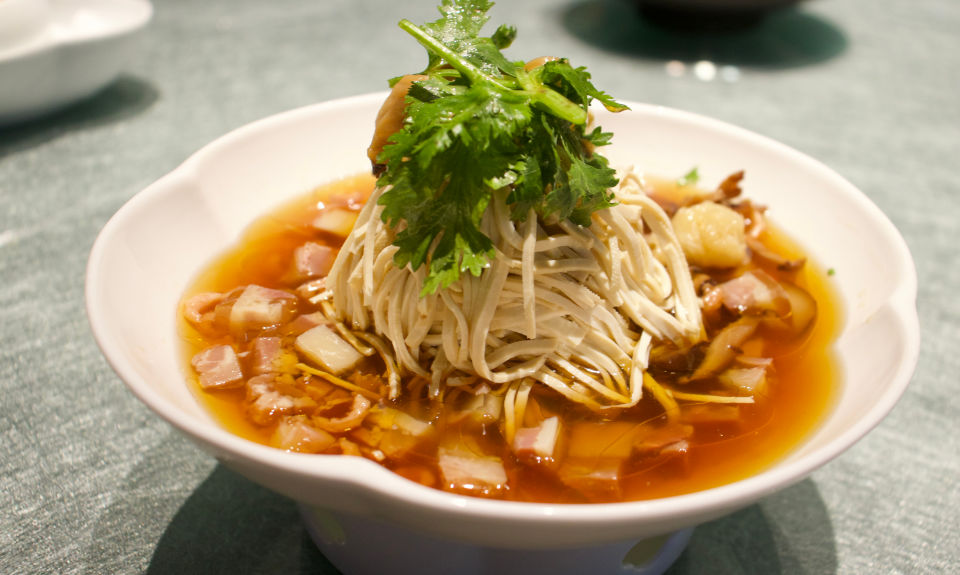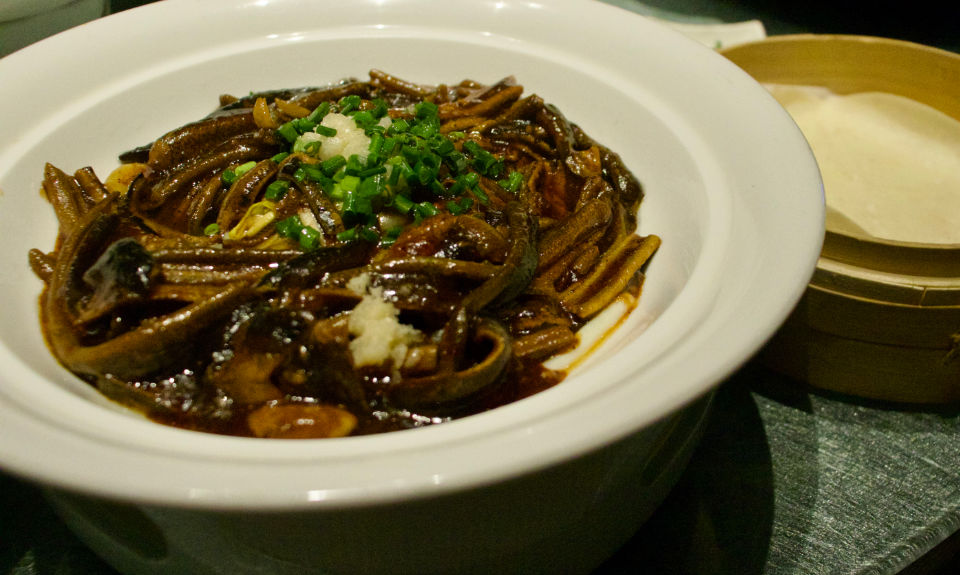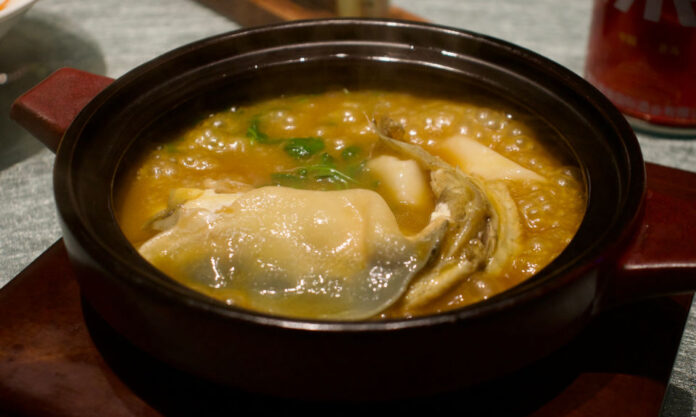Situated on the edge of the busy business district in Jiangning, this branch of a chain of restaurants stands quietly. I’ve never been too interested in chains, because I don’t think they guarantee the quality of the food and so I almost walked on by, but its slogan made stop in my tracks.
“Representative brand of Jiangsu Huaiyang cuisine”
I pride myself on being a person who has grown up eating Huaiyang cuisine for more than 20 years, so I was really curious about the level of this so-called “representative brand”. Now in a slightly questionable mood, I walked into this elegant restaurant, named “Little Chef Queen’s Utmost Selections; Huaiyang Cuisine” (小厨娘臻选淮扬菜).
The interior lighting is not bright, but not very dim, bringing on a feeling of privacy and warmth. On the wall, the four words, “Qing Yin Ya Yun” (elegant rhythm), are written in cleverly conceived calligraphy.

As a native of Taizhou, I would naturally order dried bean curd threads in consomme, a traditional local snack, of elegant colour, and with a soft, tender and very delicious taste.
According to Taizhou literature and history scholars: “Bean curd is first boiled in a pot, a nearby mason jar filled with hot alkaline water, its ratio dependent on the season. The dried bean curd is taken from the pot, poured into the mason jar and left to soak. Mastering this is the key; soak it impervious so it is not soft, but not so soft it disintegrates in to a mush”.
Most people’s understanding of dried bean curd threads in consomme in Huaiyang cuisine probably comes from the dish that is “raised shredded chicken with ham and dried tofu”, but in fact, the more authentic is the bean curd threads in consomme. Like many noodle dishes, it also has “toppings” such as chicken skin, eel or ham, and is a snack found in the old teahouses of Yangzhou and Taizhou.

The texture of the bean curd is smooth and tasty, and a little hard. The thickness of each must be maintained to the size of a matchstick. In the past, Yangzhou people used to eat it in teahouses in the morning because it was freshly cut in the morning, otherwise it would become too hard.
The first hot dish served was eel paste pancake, actually relatively innovative and consumed similar to the way Beijingers eat roast duck.
The eel paste is topped with a large amount of ground pepper and is very fragrant. The meat on the back of the eel is usually used as an ingredient in the dish, which is called “soft pocket”; the firmer part of the eel’s belly is called “navel door”, usually employed in making soup. Garlic is especially important in this dish, as the aroma of garlic paste deodorises the eel, while at the same time playing a role in enhancing the aroma.
The way to eat eel paste pancake is to wrap the pancake with some eel paste, shredded green onion, cucumber and crispy deep-fried noodle cake, creating a taste that is soft and elastic. This M.O. in consumption is also an innovation to traditional Huaiyang cuisine.

Next up was the ancient boiled puffer fish that kept on bubbling, something totally unexpected. Its soup was very rich and tasty, and to my surprise, not thickened, gaining its richness entirely from the gelatin of the puffer fish skin itself. Relatively heavy in flavour, this dish is perfect for serving with a bowl of fragrant rice.
Puffer fish has been eaten in China since ancient times, but with most of them being poisonous, the internal organs need special treatment. Nowadays, however, people don’t have to worry about this, as most puffer fish on the tables of today are farmed and screened for toxicity, which is already at a minimum. This ancient dish needs to be boiled together with the liver of the puffer fish during the preparation process, making it more delicious.
Our visit coincided with a night of heavy rain in Nanjing. Outside the window, the wind and rain roared and thunder rumbled, but inside was still warmly lit and the hot dishes were still steaming, making me feel an unspeakable happiness.
At this moment, this “representative brand of Huaiyang cuisine” had in my mind become a veritable delicacy.









